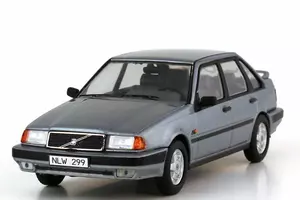
| Vehicle | Curb weight | Difference from world's smallest | Weight to power ratio | 0—60 mph acceleration ratio | Consumption ratio |
|---|---|---|---|---|---|
| 2.0 |
1050 kg / 2315 lbs |
625 kg (1378 lbs) heavier | 10 kg to 1 hp | 108 kg/s (238 lbs/s) |
130 kg/L (287 lbs/L) |
| 1.6 i |
1024 kg / 2258 lbs |
599 kg (1321 lbs) heavier | 12 kg to 1 hp | 86 kg/s (190 lbs/s) |
135 kg/L (298 lbs/L) |
| 1.7 |
980 kg / 2161 lbs |
555 kg (1224 lbs) heavier | 11 kg to 1 hp | 80 kg/s (176 lbs/s) |
132 kg/L (291 lbs/L) |
| 1.7 Turbo |
1330 kg / 2933 lbs |
905 kg (1996 lbs) heavier | 11 kg to 1 hp | 155 kg/s (342 lbs/s) |
156 kg/L (344 lbs/L) |
| 1.9 Turbo-Diesel |
1099 kg / 2423 lbs |
674 kg (1486 lbs) heavier | 12 kg to 1 hp | 94 kg/s (207 lbs/s) |
189 kg/L (417 lbs/L) |
| 1.8 |
1032 kg / 2276 lbs |
607 kg (1339 lbs) heavier | 11 kg to 1 hp | 93 kg/s (205 lbs/s) |
131 kg/L (289 lbs/L) |
| Vehicle | 2.0 |
|---|---|
| Curb weight |
1050 kg / 2315 lbs |
| Difference from world's smallest | 625 kg (625 lbs) heavier |
| Weight to power ratio | 10 kg to 1 hp |
| 0—60 mph acceleration ratio | 108 kg/s (238 lbs/s) |
| Consumption ratio |
130 kg/L (287 lbs/L) |
| Vehicle | 1.6 i |
| Curb weight |
1024 kg / 2258 lbs |
| Difference from world's smallest | 599 kg (599 lbs) heavier |
| Weight to power ratio | 12 kg to 1 hp |
| 0—60 mph acceleration ratio | 86 kg/s (190 lbs/s) |
| Consumption ratio |
135 kg/L (298 lbs/L) |
| Vehicle | 1.7 |
| Curb weight |
980 kg / 2161 lbs |
| Difference from world's smallest | 555 kg (555 lbs) heavier |
| Weight to power ratio | 11 kg to 1 hp |
| 0—60 mph acceleration ratio | 80 kg/s (176 lbs/s) |
| Consumption ratio |
132 kg/L (291 lbs/L) |
| Vehicle | 1.7 Turbo |
| Curb weight |
1330 kg / 2933 lbs |
| Difference from world's smallest | 905 kg (905 lbs) heavier |
| Weight to power ratio | 11 kg to 1 hp |
| 0—60 mph acceleration ratio | 155 kg/s (342 lbs/s) |
| Consumption ratio |
156 kg/L (344 lbs/L) |
| Vehicle | 1.9 Turbo-Diesel |
| Curb weight |
1099 kg / 2423 lbs |
| Difference from world's smallest | 674 kg (674 lbs) heavier |
| Weight to power ratio | 12 kg to 1 hp |
| 0—60 mph acceleration ratio | 94 kg/s (207 lbs/s) |
| Consumption ratio |
189 kg/L (417 lbs/L) |
| Vehicle | 1.8 |
| Curb weight |
1032 kg / 2276 lbs |
| Difference from world's smallest | 607 kg (607 lbs) heavier |
| Weight to power ratio | 11 kg to 1 hp |
| 0—60 mph acceleration ratio | 93 kg/s (205 lbs/s) |
| Consumption ratio |
131 kg/L (289 lbs/L) |